Caryn

 Through the years, there have been a few men who made a conscious decision not to engage in an act of war. One such officer was submarine officer Vasili Arkhipov, who avoided nuclear war during the Cuban Missile Crisis in 1962. He wasn’t alone in seeing the insanity of launching a nuclear weapon, however. Another Soviet officer, Lieutenant Colonel Stanislav Petrov, made the same decision not to launch an attack that could have triggered a nuclear exchange on September 26, 1983. These two men basically disobeyed an order to launch their respective nuclear attacks, to their credit.
Through the years, there have been a few men who made a conscious decision not to engage in an act of war. One such officer was submarine officer Vasili Arkhipov, who avoided nuclear war during the Cuban Missile Crisis in 1962. He wasn’t alone in seeing the insanity of launching a nuclear weapon, however. Another Soviet officer, Lieutenant Colonel Stanislav Petrov, made the same decision not to launch an attack that could have triggered a nuclear exchange on September 26, 1983. These two men basically disobeyed an order to launch their respective nuclear attacks, to their credit.
Petrov was part of the Soviet Air Defense Forces, stationed at the Serpukhov-15 bunker near Moscow. September 26, 1983, started out as a typical Monday, but it would end as anything but a typical day. That day, just three weeks after the Soviet military had shot down Korean Air Lines Flight 007, Petrov was the duty officer at the command center for the Oko nuclear early-warning system. Suddenly, the system reported that a missile had been launched from the United States, followed by up to five more. For anyone who has seen the movie, “War Game” it would seem like a video game gone rouge. Apparently, it seemed much like that for Petrov too, because he judged the reports to be a false alarm.
While Petrov saw that this attack could not be, his superiors could not see that, and they ordered the counterattack. Petrov made the decision to disobey orders, against Soviet military protocol, and this could have meant grave consequences for him. This was Russia, after all. Nevertheless, Petrov is credited with having prevented an erroneous retaliatory nuclear attack on the United States and its NATO allies that could have resulted in a large-scale nuclear war. That war could have wiped out half of the population of the countries involved. Petrov had to truly believe that what he saw with his eyes, was not reality. Every second counted…attack or stand down!! Petrov chose to stand down!! An investigation later confirmed that the Soviet satellite warning system had indeed malfunctioned. There was no attack coming from the United States. The decision Petrov made, not to launch a retaliatory nuclear strike amid this incident, caused Petrov to be credited as having “saved the world” and by refusing to launch an attack, potentially saving millions, if not billions of lives.
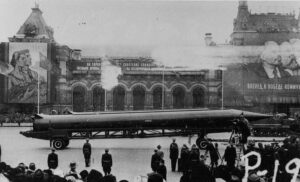
 I don’t recommend that orders always be disobeyed or taken lightly, but I think it is vital for soldiers, officers, and even civilians, to consider the consequences on both sides, and maybe…just maybe, disasters can sometimes be avoided. Launching nuclear missiles, is truly a last-ditch act. It cannot be reversed, and if these missiles are launched, people will die. And in the case of Petrov, it would have all been for nothing.
I don’t recommend that orders always be disobeyed or taken lightly, but I think it is vital for soldiers, officers, and even civilians, to consider the consequences on both sides, and maybe…just maybe, disasters can sometimes be avoided. Launching nuclear missiles, is truly a last-ditch act. It cannot be reversed, and if these missiles are launched, people will die. And in the case of Petrov, it would have all been for nothing.

 Jolene Thompson is my niece, Kellie Hadlock’s boyfriend, Tim Thompson’s daughter, and she is such a little sweetheart. She always has a smile on her face, and she is totally fearless. She is a totally tough little girl. She is an amazing big sister to her siblings, and helps take care of them, but this summer, she got to spend with her dad, and they had the best summer. Jolene is in 1st grade this year, and she spent the summer learning to ride her bike and learning how to swim. She excelled at both new skills and can’t get enough of them. Her dad is a great teacher, and he guided his little girl to the level of expert in no time. She
Jolene Thompson is my niece, Kellie Hadlock’s boyfriend, Tim Thompson’s daughter, and she is such a little sweetheart. She always has a smile on her face, and she is totally fearless. She is a totally tough little girl. She is an amazing big sister to her siblings, and helps take care of them, but this summer, she got to spend with her dad, and they had the best summer. Jolene is in 1st grade this year, and she spent the summer learning to ride her bike and learning how to swim. She excelled at both new skills and can’t get enough of them. Her dad is a great teacher, and he guided his little girl to the level of expert in no time. She 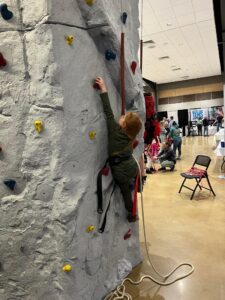
 even jumped off of the high dive in Thermopolis without hesitation…multiple times!! She is totally fearless in all aspects of her life.
even jumped off of the high dive in Thermopolis without hesitation…multiple times!! She is totally fearless in all aspects of her life.
Jolene loves to draw and color. She has that creative gene, I think. She also loves to brush and style Kellie’s hair, which if you know my family at all, is like the greatest blessing ever. Some people hate to have their hair touched, but our family…can’t get enough of having our hair brushed, styles, or just touched. Some people might call that weird, but if you like having your hair brushed and such…well, you just know what I mean. With Kellie, Jolene gets to do all the girly things that she doesn’t get to do normally, because at home, either with her dad or her mom, there is no doing the girly things. Not everyone likes the dress-up, fix the hair, girly things. That is a blessing for both Jolene and Kellie. They are best friends, and they love each other very much.
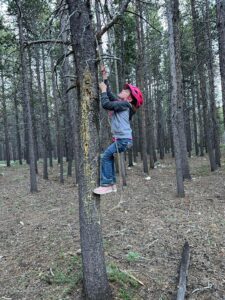

During her summer with her dad, Jolene got to do a lot of camping, hiking, and shooting. She also got to go fishing, and of course bicycling and swimming. She had a totally blissful summer. Her and her dad had a great summer…and they did all the things!! They went to a rock-climbing wall place, and Jolene climbed like an expert there too. She also showed off her climbing skills on the trees in the campgrounds she and her dad stayed in. Jolene got her first bow this year too and learned archery. Tim is a total outdoorsman, and Jolene wants to do everything her dad does, so she is eager to learn and to reach expert level. Today is Jolene’s 7th birthday. Happy birthday Jolene!! Have a great day!! We love you!!
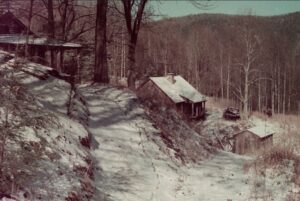
 As America grew, towns popped up in many places, only to dwindle into ghost towns when the expected industry that motivated their beginning, fell through. Lost Cove was one such town. Established just before the Civil War, it was once a thriving agricultural community, but then in the early 20th century, logging replaced farming, and the railroad brought workers. Somehow in the shuffle of changes, Lost Cove found itself off the beaten path, almost hidden in the forest, with no electricity or running water. The little town had to figure out something new, and so, because of the remoteness and because the town lay on the North Carolina/Tennessee border, an equally thriving moonshine industry was born.
As America grew, towns popped up in many places, only to dwindle into ghost towns when the expected industry that motivated their beginning, fell through. Lost Cove was one such town. Established just before the Civil War, it was once a thriving agricultural community, but then in the early 20th century, logging replaced farming, and the railroad brought workers. Somehow in the shuffle of changes, Lost Cove found itself off the beaten path, almost hidden in the forest, with no electricity or running water. The little town had to figure out something new, and so, because of the remoteness and because the town lay on the North Carolina/Tennessee border, an equally thriving moonshine industry was born.


Many people might think that the moonshine industry was all due to prohibition, and that is largely true, but while bootlegging was a crime of opportunity, it was also quite likely to be a crime of necessity. Still, while moonshine could provide a living for the residents, it would never be able to sustain a whole ton for very long. Eventually, the residents of Lost Cove began to move away to laces where they could make a living. The town, now empty, seen fell into disrepair. These days Lost Cove is a graveyard of abandoned homes and crumbling gravestones. Because Lost Cove was on the border, either state could have agreed on jurisdiction to collect tax revenues, but both declined to, thereby creating a haven for bootlegging.
Even with the logging business doing well, the timber eventually thinned and the railroad service that brought passenger trains through the area stopped. With that, the Lost Cove residents became even more isolated. The nearest stores were eight miles away, and they would have to walk for basic supplies, mostly because they didn’t have money for any other form of transportation. Soon the infrastructure deteriorated too, and the rough 
 or non-existent roads led to even more shortages. In the end, here was nothing left, but to leave. The last known resident left in 1957. Sadly, in 2007, a fire destroyed most of what still stood in Lost Cove. All that is left now is a few structures, memories, and the history of the area, only seen by the occasional hiker, using trails that remain the only route of access.
or non-existent roads led to even more shortages. In the end, here was nothing left, but to leave. The last known resident left in 1957. Sadly, in 2007, a fire destroyed most of what still stood in Lost Cove. All that is left now is a few structures, memories, and the history of the area, only seen by the occasional hiker, using trails that remain the only route of access.
 Man has always been interested in the stars and planets, even before we really knew what they were. Those mysterious lights in the sky that somehow just showed up every night and disappeared every morning, only to be replaced with the bright sunlight, quickly became a part of our lives from the time we were born. The main thing that has changed over the centuries is the equipment with which we could view space for ourselves.
Man has always been interested in the stars and planets, even before we really knew what they were. Those mysterious lights in the sky that somehow just showed up every night and disappeared every morning, only to be replaced with the bright sunlight, quickly became a part of our lives from the time we were born. The main thing that has changed over the centuries is the equipment with which we could view space for ourselves.
On September 23, 1846, Johann Gottfried Galle, a German astronomer from Radis, Germany, at the Berlin Observatory with the assistance of student Heinrich Louis d’Arrest, was the first person to view the planet Neptune and know what he was looking at. Of course, other astronomers had seen other planets, but this was the first time anyone actually saw the eighth planet in our solar system. Neptune was believed to be out there in that position, as French astronomer Urbain-Jean-Joseph Le Verrier had calculated the approximate location of the planet to be. Le Verrier, by studying gravity-induced disturbances in the  motions of Uranus guessed that another planet was there. He then told Galle of his findings on the 23rd, and the same night Galle and his assistant Heinrich Louis d’Arrest identified Neptune at their observatory in Berlin. Basically, they looked at its movement against a background of stars over 24 hours and that confirmed that it had to be a planet…seeing a place where the stars were blocked by “something” or in this case, Neptune.
motions of Uranus guessed that another planet was there. He then told Galle of his findings on the 23rd, and the same night Galle and his assistant Heinrich Louis d’Arrest identified Neptune at their observatory in Berlin. Basically, they looked at its movement against a background of stars over 24 hours and that confirmed that it had to be a planet…seeing a place where the stars were blocked by “something” or in this case, Neptune.
Neptune is a blue gas giant, which has a diameter four times that of Earth. The astronomers named it after the Roman god of the sea…why do they always use the Greek or in this case Roman gods? Neptune has eight known moons, of which Triton is the largest. It also has a ring system containing three bright and two dim rings. It completes an orbit of the sun once every 165 years. Since Pluto was “deplanetized” in 2006, because it was demoted to dwarf planet, Neptune became the farthest known solar planet. While it may be the furthest out, it  is not the smallest, but rather it’s the fourth-largest planet by diameter, the third-most-massive planet, and the densest giant planet. Neptune’s mass is 17 times the mass of Earth, and slightly more massive than its near-twin Uranus. Neptune is more dense and physically smaller than Uranus, because its greater mass causes more gravitational compression of its atmosphere. It is referred to as one of the solar system’s two ice giant planets
is not the smallest, but rather it’s the fourth-largest planet by diameter, the third-most-massive planet, and the densest giant planet. Neptune’s mass is 17 times the mass of Earth, and slightly more massive than its near-twin Uranus. Neptune is more dense and physically smaller than Uranus, because its greater mass causes more gravitational compression of its atmosphere. It is referred to as one of the solar system’s two ice giant planets
In 1989, the US spacecraft Voyager 2 was the first human spacecraft to actually visit Neptune. Nevertheless, while much more has been learned about the eighth planet, the first person to actually find it was Johann Gottfried Galle, way back in 1846.

 I don’t think any of us could have foreseen the changes that would occur in ten short years of marriage. Jason Sawdon became my nephew when he married my niece Jessica Hadlock on August 18, 2012, in what they have dubbed “the most amazing, fun party celebrating love.” They have been celebrating ever since that day. When they got married, Jason was a patrolman for the Wyoming Highway Patrol. He still works for the Wyoming Highway Patrol, but in a different capacity these days. A little over a year ago, Jason was promoted to Sergeant of Equipment and Technology, in a change that unfortunately for the rest of the family, took his family from Casper to Cheyenne. So, in the next step in his decorated career, they moved to Cheyenne on June 5, 2021. It was hard for all of us to have them go, but it was the best thing for their family. Jason is no longer on the street, and his hours are much better for a family man. His girls need him home at night.
I don’t think any of us could have foreseen the changes that would occur in ten short years of marriage. Jason Sawdon became my nephew when he married my niece Jessica Hadlock on August 18, 2012, in what they have dubbed “the most amazing, fun party celebrating love.” They have been celebrating ever since that day. When they got married, Jason was a patrolman for the Wyoming Highway Patrol. He still works for the Wyoming Highway Patrol, but in a different capacity these days. A little over a year ago, Jason was promoted to Sergeant of Equipment and Technology, in a change that unfortunately for the rest of the family, took his family from Casper to Cheyenne. So, in the next step in his decorated career, they moved to Cheyenne on June 5, 2021. It was hard for all of us to have them go, but it was the best thing for their family. Jason is no longer on the street, and his hours are much better for a family man. His girls need him home at night.

They have spent the last year exploring their new city, and enjoying their new house, which Jason spent a lot of time refreshing for them before they moved in. This past year brough some sadness, in that they lost Daisy, their sweet Boxer dog, but now they have adopted a new Boxer dog that they named Riley. She has been so great for their family, and she is Jason and Jessi’s daughter, Adelaide’s best friend…and for Jason and Jessi, that means everything. As far as they are concerned, their little daughter, Adelaide is the best thing that has ever happened to them, and we all agree. She has been such a blessing.
Jason is such a happy person. He has a great sense of humor and loves to tease, but Jason also has a heart of gold. I will never forget what he did for my mom after my dad had passed away. Her birthday was on January 1st, so we always had a party for her. She and my dad always had their special dance. With Dad gone, mom 
 felt like “the forgotten dancer” until Jason took her out on the dance floor. She struggled to stand on her own, but he held her up, and she got her dance. That was the single most amazingly precious thing I have ever seen…and I will never forget his kindness to her. It meant the world to her. That is the essence of the kind of person Jason is…with everything and everyone. Anyone who has ever been on the receiving end of Jason’s kindness, knows just what I mean. Today is Jason’s birthday. Happy birthday Jason!! Have a great day!! We love you!!
felt like “the forgotten dancer” until Jason took her out on the dance floor. She struggled to stand on her own, but he held her up, and she got her dance. That was the single most amazingly precious thing I have ever seen…and I will never forget his kindness to her. It meant the world to her. That is the essence of the kind of person Jason is…with everything and everyone. Anyone who has ever been on the receiving end of Jason’s kindness, knows just what I mean. Today is Jason’s birthday. Happy birthday Jason!! Have a great day!! We love you!!

 The year 2002 proved to be a really bad one for Hawkins and Powers Aviation of Greybull, Wyoming. Hawkins and Powers had a contract with the United States Forest Service (USFS), to drop fire retardant on wildfires across the country. That year, two large airtankers…a Lockheed C-130 Hercules and a Consolidated PB4Y-2 Privateer…crashed about a month apart while performing aerial firefighting operations. No one saw this coming, but the crashes resulted in a review of the maintenance and use of the entire US large airtanker fleet. Once the review started, they found enough problems that it ultimately brought about the grounding of the whole fleet, which was comprised of 33 aircraft in all. The grounding dramatically reduced the resources available to fight major wildfires. These planes were a vital part of the arsenal used by the forest service to contain wildfires without loss of life and structures. Nevertheless, the planes had to be safe.
The year 2002 proved to be a really bad one for Hawkins and Powers Aviation of Greybull, Wyoming. Hawkins and Powers had a contract with the United States Forest Service (USFS), to drop fire retardant on wildfires across the country. That year, two large airtankers…a Lockheed C-130 Hercules and a Consolidated PB4Y-2 Privateer…crashed about a month apart while performing aerial firefighting operations. No one saw this coming, but the crashes resulted in a review of the maintenance and use of the entire US large airtanker fleet. Once the review started, they found enough problems that it ultimately brought about the grounding of the whole fleet, which was comprised of 33 aircraft in all. The grounding dramatically reduced the resources available to fight major wildfires. These planes were a vital part of the arsenal used by the forest service to contain wildfires without loss of life and structures. Nevertheless, the planes had to be safe.
The review was prompted by the wings of these planes actually folding up and coming off mid-flight, bringing the aircraft down instantly. One of the crashes was actually caught on camera when a tourist was filming the firefighting efforts and happened to be filming at exactly the moment the wings came off. I can only imagine the shock they must have felt when they saw that. I have only seen pictures, knowing full well what is about to happen, and it still gets to me. The thought they were filming an amazing firefighting event, only to find themselves filming a tragedy.
The first accident involved a Lockheed C-130 Hercules, on June 17, 2002, near Walker, California. The plane, registration N130HP, call sign Tanker 130, was flying against the Cannon Fire, which was located south of Lake 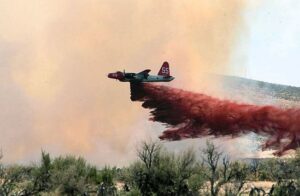 Tahoe and north of Yosemite National Park. The Cannon Fire crossed the California State Line and burned northward into the Walker River area in Nevada. More than 1000 people were evacuated from homes and camps in the mountains near Walker River, and at least one home was destroyed. The fire nearly tripled in size that Monday, growing from 5,000 acres to just under 15,000. The C-130 Hercules that went down fighting the fire killed 3 people that day. The aircraft, “previously United States Air Force (USAF) Serial Number 56-0538, was one of the original C-130A production series and had been built and delivered to the USAF in 1957. It was retired from military service in 1986. In May 1988, the aircraft was acquired from the General Services Administration by the USFS, which in August that year sold it and five other C-130s it had acquired to Hemet Valley Flying Service, for conversion to an airtanker. Hemet then sold the C-130 to Hawkins and Powers. At the time of the crash, the aircraft had logged 21,863 flight hours.”
Tahoe and north of Yosemite National Park. The Cannon Fire crossed the California State Line and burned northward into the Walker River area in Nevada. More than 1000 people were evacuated from homes and camps in the mountains near Walker River, and at least one home was destroyed. The fire nearly tripled in size that Monday, growing from 5,000 acres to just under 15,000. The C-130 Hercules that went down fighting the fire killed 3 people that day. The aircraft, “previously United States Air Force (USAF) Serial Number 56-0538, was one of the original C-130A production series and had been built and delivered to the USAF in 1957. It was retired from military service in 1986. In May 1988, the aircraft was acquired from the General Services Administration by the USFS, which in August that year sold it and five other C-130s it had acquired to Hemet Valley Flying Service, for conversion to an airtanker. Hemet then sold the C-130 to Hawkins and Powers. At the time of the crash, the aircraft had logged 21,863 flight hours.”
The second crash, also caused by structural failure, occurred on July 18, 2002, near Estes Park, Colorado. The structure failure in this case was in the wing’s spar adjacent to the left side of the fuselage. Tanker 123, by callsign, was loaded with 2,000 US gallons of fire retardant at the time of the accident. The plane had begun a left turn to line up for its eighth drop of the day on the Big Elk Fire, and while it was still in the 15–20° left bank, the witnesses on the ground and in another tanker saw the left wing separate from the aircraft and “fold upwards”, followed almost immediately by the initiation of a fire. Without its left wing, the aircraft continued to roll left, and crashed to the ground at a 45° nose down attitude. The impact started a large fire at the wreck site. Both crewmen were killed instantly.
The aircraft, “a Consolidated PB4Y-2 Privateer registered N7620C, was built during World War II. It had been delivered in July 1945 to the United States Navy, which used it for coastal patrol duties. In 1952, it was 
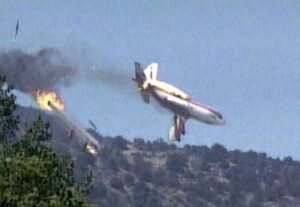 transferred to the United States Coast Guard, which operated it until it was retired in 1956. The aircraft was removed from storage and converted to an airtanker in 1958, then was flown by several different companies, the last being Hawkins and Powers. At the time of the crash, the airframe had logged 8,346.3 flight hours.” The Big Elk Fire burned approximately 4,348 acres.
transferred to the United States Coast Guard, which operated it until it was retired in 1956. The aircraft was removed from storage and converted to an airtanker in 1958, then was flown by several different companies, the last being Hawkins and Powers. At the time of the crash, the airframe had logged 8,346.3 flight hours.” The Big Elk Fire burned approximately 4,348 acres.

 My grandniece, Hattie Parmely is just growing up so fast. She and her sister Reagan are homeschooled on their farm by their mom, Ashley Parmely, while their younger brother attends pre-school in town for one more year, and their younger sister, Maeve is in her first year of pre-school in town. Once the two younger kids are done with pre-school, they will be homeschooled too. Hattie and Reagan got to go to Denver with their grandpa, Albert Eighmy recently, to visit their grandma, Kari Eighmy, who was taking some training for work in Denver for a couple of weeks. The girls had a great time.
My grandniece, Hattie Parmely is just growing up so fast. She and her sister Reagan are homeschooled on their farm by their mom, Ashley Parmely, while their younger brother attends pre-school in town for one more year, and their younger sister, Maeve is in her first year of pre-school in town. Once the two younger kids are done with pre-school, they will be homeschooled too. Hattie and Reagan got to go to Denver with their grandpa, Albert Eighmy recently, to visit their grandma, Kari Eighmy, who was taking some training for work in Denver for a couple of weeks. The girls had a great time.
It’s hard to believe that Hattie is eight years old already. She really seems more mature than that though. I think that is common with farm kids, because part of their everyday life involves the responsibilities of the farm animals, and their care. A lot of kids have chores to do, but the chores of farm kids are very different than the chores of city kids. Hattie and her siblings have witnessed many animal births, and of course some deaths too. They know firsthand what life’s all about. They have mucked stalls, bottle fed the babies, and carried feed to the animals. Of course, there is the fun stuff too. Hattie and her 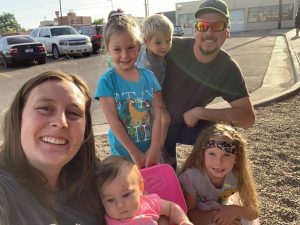 asiblings regularly get to ride their horses, play with the baby goats and kittens, jump on their trampoline, ride round on the tractor with their dad, Eric Parmely. Like most kids these days, Hattie’s driving skills began early when she got her own little car, which is too small for her now, of course. She also likes to float the river with her family, and she is getting really good at maneuvering a kayak.
asiblings regularly get to ride their horses, play with the baby goats and kittens, jump on their trampoline, ride round on the tractor with their dad, Eric Parmely. Like most kids these days, Hattie’s driving skills began early when she got her own little car, which is too small for her now, of course. She also likes to float the river with her family, and she is getting really good at maneuvering a kayak.
Hattie and her older sister, Reagan both have their own dog. They are responsible for their own dog’s care. Hattie named her dog Lucy, while Reagan named hers Bristol. The younger children will get a dog of their own when they turn seven. That is the age their parents decided that they were old enough to handle the care of their own dog. Maeve doesn’t care too much that she can’t have a dog yet, especially since they also have several family dogs, but Bowen can’t wait, and isn’t sure he thinks it’s fair that he has to.
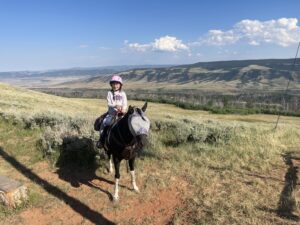

Hattie is growing into such a little lady. She has her own style, and it’s perfect for her. She kind of a girly girl, but she can rough and tumble with the best of them. She is a good big sister to Bowen and Maeve, but they do occasionally get on her nerves, as does her sister, Reagan. It’s just the way of having siblings, and anyone who has siblings knows that is true. That’s just how it is. Today is Hattie’s 8th birthday. Happy birthday Hattie!! Have a great day!! We love you!!
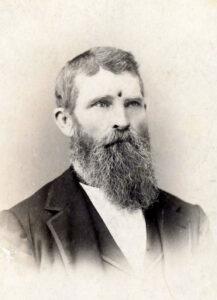 Anytime a soldier goes to war, the possibility exists that they will be severely wounded or even killed in action, but I don’t think anyone expected the events of September 19, 1863. It was the middle of the Civil War, and Jacob C Miller was a private in Company K, 9th Indiana Infantry Regiment. The company was fighting in the Battle of Chickamauga near Brock Field in southeastern Tennessee. One of the fastest ways to “get dead” is to get shot in the head. There is something about a bullet hitting the skull that puts an end to life pretty quickly…most of the time, anyway.
Anytime a soldier goes to war, the possibility exists that they will be severely wounded or even killed in action, but I don’t think anyone expected the events of September 19, 1863. It was the middle of the Civil War, and Jacob C Miller was a private in Company K, 9th Indiana Infantry Regiment. The company was fighting in the Battle of Chickamauga near Brock Field in southeastern Tennessee. One of the fastest ways to “get dead” is to get shot in the head. There is something about a bullet hitting the skull that puts an end to life pretty quickly…most of the time, anyway.
Maybe it was the type of bullets used in the Civil War, but no matter how it happened, I don’t think anyone would disagree with me when I say that living after taking a bullet between the eyes was a miracle. Jacob C Miller was just such a miracle man. After being shot, Miller crumpled to the ground. I’m sure everyone thought it was over, but Miller said later that he could hear the words of his captain, who said, “It’s no use to remove poor Miller, for he is dead.” The company, believing he was dead, moved on. Now, just imagine the shock when Miller became conscious and found himself alone. He raised up in a sitting position. Curiosity caused him to feel his wound. Clearly there was damage done. Miller’s left eye was out of place, and he tried to 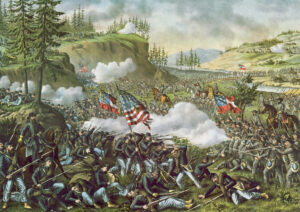 place it back, but had to move the crushed bone back together, or as near together as he could first. Once the eye was in its proper place, he bandaged the eye the best he could with his bandana. Then he began the journey to get help. Miller struggled to follow his company, until he was finally picked up by a liter party, and taken for treatment.
place it back, but had to move the crushed bone back together, or as near together as he could first. Once the eye was in its proper place, he bandaged the eye the best he could with his bandana. Then he began the journey to get help. Miller struggled to follow his company, until he was finally picked up by a liter party, and taken for treatment.
When he was taken to the doctors, and they examined him, they said that they were able to see his pulsating brain quite clearly. That said, we know that the bullet wasn’t somehow stopped by his skull. It had actually entered the brain lining, or at least into the skull bone. At that point, nothing was done with the bullet, and Miller was sent home to Logansport, Indiana. Doctors there were hesitant to remove the bullet, because they thought Miller would die, and somehow, he seemed to be functioning ok with the bullet in place. In the end 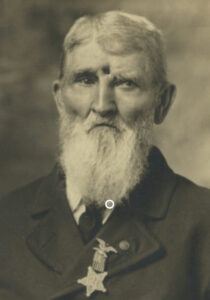 they did remove about a third of the bullet, and Miller went on to live his life. Nevertheless, more pieces of the bullet simply fell out decades later. It was as if his body just rejected the foreign pieces of lead and moved them out of his head. It was a good thing, because the pressure on the bullet fragments during times of illness caused his to become delirious. Once the fragments fell out, that stopped.
they did remove about a third of the bullet, and Miller went on to live his life. Nevertheless, more pieces of the bullet simply fell out decades later. It was as if his body just rejected the foreign pieces of lead and moved them out of his head. It was a good thing, because the pressure on the bullet fragments during times of illness caused his to become delirious. Once the fragments fell out, that stopped.
Miller was born on August 4, 1840, in Bellevue, Ohio. He was shot on September 19, 1863, at the age of 23 years. Private Jacob C Miller lived an amazing 54 years with an open wound in his head. The wound never fully healed, but did not fully penetrate his skull, and apparently the brain area did close over, and caused no damage to his brain. He died January 13, 1917, in Omaha, Nebraska at the age of 76 years. No cause of death is mentioned, but I guess we know it wasn’t a gunshot wound to the head.
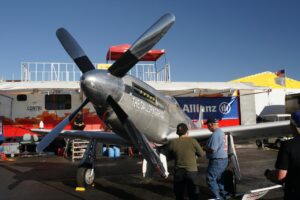 James Kent “Jimmy” Leeward was an American air racer and owner of the Leeward Air Ranch in Ocala, Florida. He was also the owner and pilot of the heavily modified North American P-51 Mustang racing aircraft known as The Galloping Ghost. Leeward loved his plane, loved flying, and especially loved air racing. He loved the thrill of the air shows and putting his plane through its paces. The Galloping Ghost was an amazing aircraft that held various airspeed records. It was also the plane whose fatal crash in 2011 led to several changes to make air shows safer.
James Kent “Jimmy” Leeward was an American air racer and owner of the Leeward Air Ranch in Ocala, Florida. He was also the owner and pilot of the heavily modified North American P-51 Mustang racing aircraft known as The Galloping Ghost. Leeward loved his plane, loved flying, and especially loved air racing. He loved the thrill of the air shows and putting his plane through its paces. The Galloping Ghost was an amazing aircraft that held various airspeed records. It was also the plane whose fatal crash in 2011 led to several changes to make air shows safer.
The Galloping Ghost was built in 1944 by North American Aviation for the Army Air Force. Following its successful service during World War II, the plane was sold as postwar surplus. It was modified and raced by a series of owner over the next half-century, including finally, Aero Trans Corporation in Ocala, Florida. Jimmy Leeward was born on October 21, 1936, in Brackenridge, Pennsylvania to parents Albert and Mary Leeward. He grew up around airplanes, sitting first in the cockpit with his dad as just a toddler. The age of 11 or 12 found him often flying a Piper Cub with his father. At age 14, his father allowed him to fly solo in a North American T-6 Texan trainer aircraft. By age 18, he was 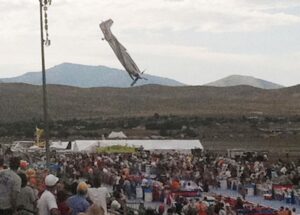 flying charters in a Beechcraft Model 18. While still in college, he flew a Formula One racer in the Fort Wayne air races. He was hooked on air racing from that moment on. In 1964, he was part of the crew on an airplane at the very first Reno Air Races. By 1976, being part of the crew would no longer do, and he first flew his P-51D Mustang “Cloud Dancer” in the Unlimited Class at Reno. In 1983, he purchased the P-51D racer “Jeannie” from Wiley Sanders. He never looked back, later becoming a movie stunt pilot. He was featured in such movies as Cloud Dancer, Smokey and the Bandit 3, Tuskegee Airmen, Thirteen Days, Dragonfly, Thunder Over Reno, Lonely Hearts, and Amelia.
flying charters in a Beechcraft Model 18. While still in college, he flew a Formula One racer in the Fort Wayne air races. He was hooked on air racing from that moment on. In 1964, he was part of the crew on an airplane at the very first Reno Air Races. By 1976, being part of the crew would no longer do, and he first flew his P-51D Mustang “Cloud Dancer” in the Unlimited Class at Reno. In 1983, he purchased the P-51D racer “Jeannie” from Wiley Sanders. He never looked back, later becoming a movie stunt pilot. He was featured in such movies as Cloud Dancer, Smokey and the Bandit 3, Tuskegee Airmen, Thirteen Days, Dragonfly, Thunder Over Reno, Lonely Hearts, and Amelia.
I suppose that with any type of stunt performance, the very real possibility of an accident exists. Many people might assume that it is just a matter of time, but there is no real proof to that statement, just speculation. Nevertheless, on September 16, 2011, Leeward’s “luck” ran out. While he was in the middle of a race over Reno, Nevada, where it all started, Leeward’s racing days came to a tragic end. In the middle of the race, The Galloping Ghost suddenly veered off course. Leeward tried to regain control, but in the end, it was determined that the cause of the crash was “flutter.” Flutter is when the plane is flown faster than it is designed to go. 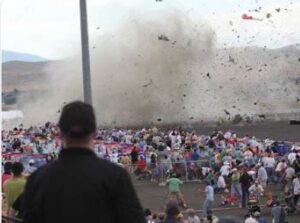 Leeward exceeded by nearly 40 miles per hour, the aircraft’s previous top speed without any previous testing to determine if the aircraft would be able to resist flutter at the new speeds. It couldn’t. When Leeward was unable to regain control, The Galloping Ghost crashed into the crowd at the National Championship Air Races at Reno Stead Airport, in a crash that killed him and 10 others. Additionally, 75 people were injured. An investigation by the National Transportation Safety Board blamed Leeward for “‘operating at the edge of the envelope’ without fully reporting and testing modifications to his plane.” Safety standards for air shows were significantly changed because of this crash. When he died, Jimmy Leeward was 74 years old.
Leeward exceeded by nearly 40 miles per hour, the aircraft’s previous top speed without any previous testing to determine if the aircraft would be able to resist flutter at the new speeds. It couldn’t. When Leeward was unable to regain control, The Galloping Ghost crashed into the crowd at the National Championship Air Races at Reno Stead Airport, in a crash that killed him and 10 others. Additionally, 75 people were injured. An investigation by the National Transportation Safety Board blamed Leeward for “‘operating at the edge of the envelope’ without fully reporting and testing modifications to his plane.” Safety standards for air shows were significantly changed because of this crash. When he died, Jimmy Leeward was 74 years old.
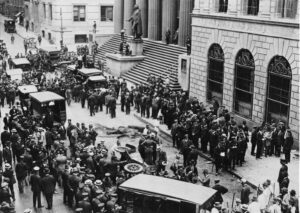
 Acts of terrorism somehow seem to be a normal possibility in the times we live in, but are they just a phenomenon that exists in our current era? Not really. While they may have been to a lesser degree, these kinds of things have been around fora long time. On September 16, 1920, during a busy day on Wall Street, New York was hit by an unforeseen event. Bankers and stockbrokers were bustling around with an average day in the financial world. Then, as the church bells struck 12 noon, 100 pounds of dynamite detonated in front of the Assay Office.
Acts of terrorism somehow seem to be a normal possibility in the times we live in, but are they just a phenomenon that exists in our current era? Not really. While they may have been to a lesser degree, these kinds of things have been around fora long time. On September 16, 1920, during a busy day on Wall Street, New York was hit by an unforeseen event. Bankers and stockbrokers were bustling around with an average day in the financial world. Then, as the church bells struck 12 noon, 100 pounds of dynamite detonated in front of the Assay Office.
Concealed in a horse-drawn wagon that had been parked for some time in front of the Assay Office, the bomb suddenly exploded. An employee of J.P. Morgan, Andrew Dunn said, “That was the loudest noise I ever heard in my life. It was enough to knock you out by itself.” The normally businesslike street was instantly transformed into what looked more like a battlefield than a financial district. There was debris, blood, and charred bodies everywhere. Thirty men and women lost their lives instantly. Eight more would die of their injuries later on. Hundreds of people were injured with many of them getting serious burns.
At the site of the 1920 Wall Street bombing, pock marks from the bomb are still visible to this day. Apparently, there was some warning of the impending attack, because a day after the attack, postal workers uncovered flyers that have been dropped into the mailboxes in Wall Street. The flyers read, “Remember, we will not tolerate any longer. Free the political prisoners, or it will be sure death for all of you.” It was signed the American Anarchist Fighters. Authorities immediately suspected the Galleanists, a gang of anti-government Italian anarchists led by Luigi Galleani, but unfortunately, they could not uncover any evidence to charge them with the crime. While the FBI had numerous leads, they couldn’t come close to any significant evidence. The investigation went on for years and was finally delegated a cold cast with the last known investigation taking 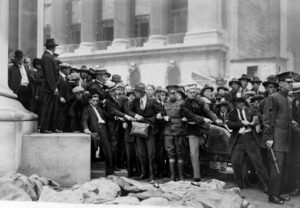
 place in 1944. Finally, the FBI concluded that the explosion was most likely caused by “Italian anarchists or Italian terrorists.” Nevertheless, they could not prove anything, and no one was ever charged with the crime. Mario Buda, a Galleanist, was considered as a likely suspect, but with no proof, he was never charged. No one has ever claimed responsibility for the attack even after 102 years.
place in 1944. Finally, the FBI concluded that the explosion was most likely caused by “Italian anarchists or Italian terrorists.” Nevertheless, they could not prove anything, and no one was ever charged with the crime. Mario Buda, a Galleanist, was considered as a likely suspect, but with no proof, he was never charged. No one has ever claimed responsibility for the attack even after 102 years.

